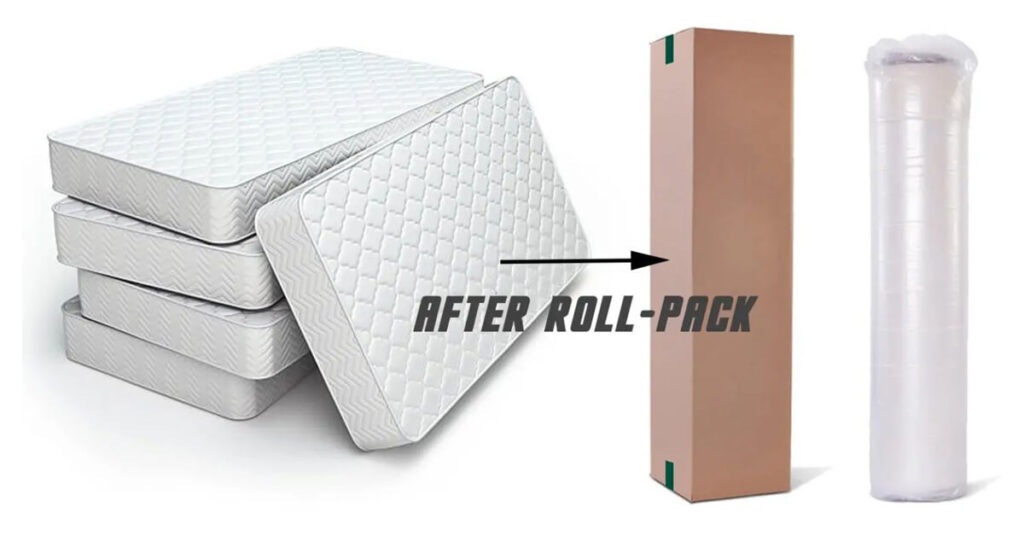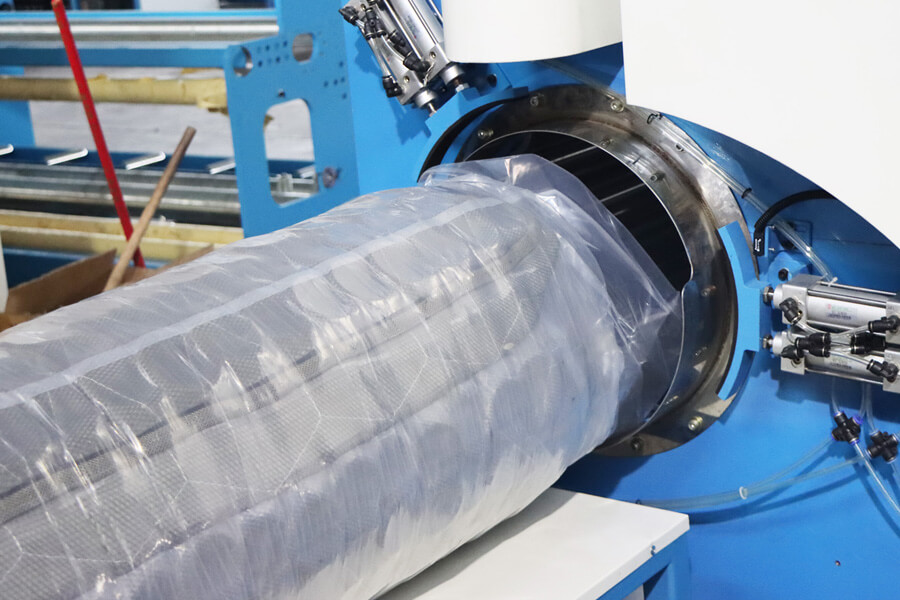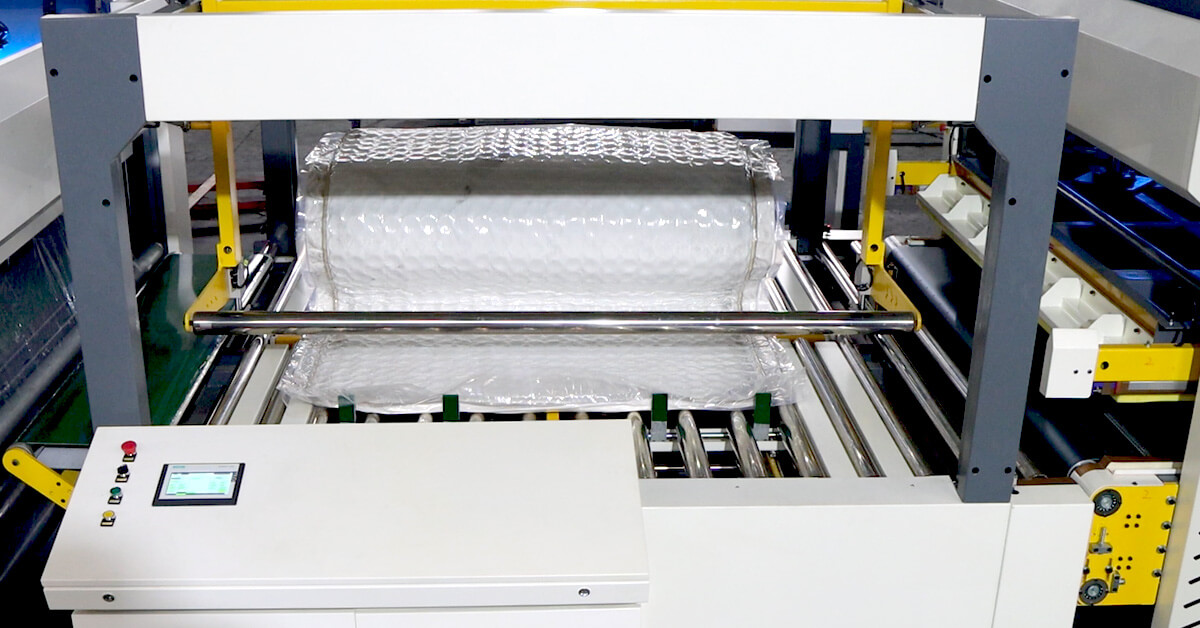The Ultimate Guide to Packing a Mattress in a Box
Packing a mattress in a box is not as difficult as it may seem at first glance. With the right mattress machines and instructions, anyone can easily pack their mattress for storage or transportation. In this comprehensive guide, we will cover everything from choosing the appropriate packing materials to folding the mattress correctly and using a mattress folding machine or mattress roll packing machine. We’ll also provide tips on how to make sure that your mattress is packed away safely and securely for its journey. With our help, you’ll be able to pack your mattress like a pro in no time!
Introduction to packing a mattress in a box
Packing a mattress in a box is the best way to store or transport it. It helps protect the mattress from dirt, dust, and other elements that might damage it during transportation. Additionally, packing a mattress in a box also ensures that the mattress stays clean and undamaged during storage.

There are many types of mattresses that can be packed in a box, including foam mattresses, spring mattresses, latex mattresses, and hybrid mattresses. The size of the standard mattress box depends on the dimensions of your particular mattress – typically about 80 inches long by 80 inches wide by 10 inches deep.
When packing a mattress in a box, you will need to use certain materials to ensure its safety and security during transit. These include cardboard boxes for protection against dents and scratches; bubble wrap or plastic covers for additional cushioning; packing tape for sealing the edges; and labels for easy identification of contents.
Once you have all of your materials ready, folding your mattress properly is essential for packing it into a box. Start with one end of the folded mattress facing up towards you then grab both ends of the folded side (one in each hand). Bring them together horizontally so that they form an ‘X’ shape then fold them across each other until they are completely flat. Finally, secure them together with tape before placing them inside the box. By following these simple steps correctly you can ensure that your mattress is safely packed away for its journey!
How to fold a mattress for proper packing
Folding a mattress properly is key to ensuring that it is packed safely and securely for storage or transportation. Before folding, choose an area with plenty of room to make the process easier and safer. Make sure your surface is flat, clean, and dry before you start.
Once you have chosen the right spot, begin by folding the mattress in thirds. Start with one end of the mattress and fold it over itself until it meets the other end. Take care not to damage any of the springs or foam layers while you are folding.
Next, fold the mattress in half lengthwise so that it is now a quarter of its original size. Tuck the top edge of the folded mattress into the bottom crease and give the whole bundle a shake to make sure everything is in place before continuing onto securing it with strong rope or straps. This will ensure that your mattress remains tightly bound together during its journey.
Finally, wrap your package securely in plastic wrap or bubble wrap for added protection against dust and water damage while being transported. Once everything has been securely wrapped up, label your box clearly with “Fragile” stickers so handlers know how to handle it carefully in transit.
By following these steps closely you can guarantee that your mattress will be adequately packed away for safe storage or transportation!
Tools needed for properly packaging a mattress
When it comes to packing a mattress, having the right resources can make all the difference. Traditional materials such as cardboard boxes and bubble wrap are useful, but there are specialized tools that can help you get the job done more efficiently and with added protection. A mattress folding machine is one such tool that can save time and effort; this device folds mattresses into compact, transportable boxes quickly and precisely. Additionally, a mattress roll packing machine is essential for creating tight rolls of your bedding so it takes up minimal space in a box while still providing ample cushioning during transportation or storage.
For additional protection, foam sheets or pads should also be used when boxing up your mattress. Not only do they provide extra cushioning during transit or storage, they add insulation value to help keep dust mites and other allergens away from your bedding over long periods of time. Finally, straps, rope, and tape are necessary items that will secure your rolled-up or folded up mattress in its box before transit or storage; these should be wrapped around each end of the rolled-up bedding then taped securely together at both ends with packing tape or twine before taping along each side of the box for extra security.
Having these resources on hand when packaging your mattress will guarantee its safe arrival! With proper tools and materials in hand, you’ll be able to package up your mattress swiftly while ensuring maximum security throughout transport or storage.
Instructions for using a mattress folding machine
When packing a mattress in a box, one of the most efficient methods is to use a mattress folding machine. This specialized tool simplifies the process and ensures that your mattress is folded properly for safe storage or transportation. However, it’s important to choose the right machine for your needs and to understand how it works before attempting to use it. Here are some considerations and instructions for using a mattress folding machine:
1. Considerations when Choosing a Mattress Folding Machine: Before purchasing or renting a mattress folding machine, be sure to check its specifications. Look for features such as adjustable speed, adjustable pressure settings, and an adjustable cutting blade that will accommodate different thicknesses of mattresses. Additionally, determine what type of power source you need; machines typically require either electricity or compressed air.
2. Preparing the Mattress: Place the mattress on top of a flat surface within the conveyor area of the machine. Make sure all surfaces are free from debris that could interfere with folding operations like dust or lint particles, as well as any sharp objects that may damage the material during handling. Finally, adjust the machine settings according to your specific requirements such as mattress size and thickness.
3. Automatic bagging mattress and sealing: The mattress is covered with a layer of film and then sealed on all four sides to prevent air leakage. Then compress mattress into flat-pack.
4. Compress mattress and folding: Fold the flat-pack state mattress. Folding will make the mattress package smaller, easier to store, and easier to transport.
5. Roll packing: Through the multi axis rolls method mattress roll-pack in the PE bag to shape a cylindrical package. These machines are designed specifically to compress foam mattresses into a compact size suitable for transportation. Follow the manufacturer’s instructions to operate the machine effectively.
6. Completing Operations: When all adjustments have been made according to your specifications, press down on the start button until all components of the operation have completed their cycle (this should take about 30 seconds). Once complete you can then turn off the power switch before removing your folded mattress from inside the machine area
By following these steps closely when using a mattress folding machine, readers can ensure they get optimal results each time they pack their mattresses away safely for storage or transport!
Instructions for using a mattress roll packing machine
Instructions for using a mattress roll packing machine can help to make packing a mattress easier and more efficient. This method is ideal for mattresses that are too long or wide to fit in standard boxes, and it helps to protect the mattress from dirt and damage during storage or transport.

Using a mattress roll packing machine requires two people; one person feeds the mattress into the machine while the other operates it. It is important that both individuals have experience with the machinery, as incorrect use could lead to damage of the mattress. Furthermore, always ensure that safety measures are taken when operating the machine, such as wearing protective gear and ensuring there are no loose items in the area where you are working.
To begin rolling the mattress, start by positioning it face-down on a flat surface. Place one end of the mattress onto the feeder belt of the machine and hold it firmly in place with your hands while slowly feeding it under light pressure. Make sure that you apply even pressure all along its length so that it rolls up evenly; this will prevent any ripples or creases from forming in between layers of fabric. Once all of your desired layers are rolled up, secure them tightly with packing tape at both ends.
Utilizing a mattress roll packing machine can be an effective way to pack away mattresses quickly and securely for storage or transportation. With these simple steps, you’ll be able to pack away your mattresses without any hassle or worry about potential damage!

